The PM SHRI Scheme (Pradhan Mantri Schools for Rising India) is one of the most ambitious education reforms in India’s history.
Launched in 2022, the PM SHRI yojana aims to transform over 14,500 existing schools into model institutions that exemplify the vision of the National Education Policy (NEP) 2020.
These schools are being upgraded with modern infrastructure, smart classrooms, inclusive education practices, and holistic, competency-based learning methods.
PM SHRI yojana focuses on improving not just buildings or facilities, but the entire learning ecosystem — teachers, pedagogy, assessments, and community participation.
PM SHRI Yojana at a Glance
| Category | Details |
|---|---|
| Scheme Name | Pradhan Mantri Schools for Rising India (PM SHRI) |
| Launch Date | 7 September 2022 (approved by Union Cabinet) |
| Implemented By | Ministry of Education, Government of India |
| Scheme Type | Centrally Sponsored Scheme (CSS) |
| Scheme Duration | 2022 – 2027 (5 Years) |
| Target Schools | ~ 14,500 existing Government and Local Body schools |
| Funding Pattern | 60 : 40 (General States / UTs) · 90 : 10 (North-Eastern & Himalayan States) · 100 % (Central for UTs / KVS / NVS) |
| Total Budget Outlay | ₹ 27,360 crore (₹ 18,128 crore Central share) |
| Core Objective | Upgrade existing schools as model institutions showcasing NEP 2020 principles |
| Key Focus Areas | Infrastructure modernisation · Digital classrooms · Inclusive education · Teacher training · Green campuses |
| Official Website | 🔗 pmshri.education.gov.in |
| Helpline Email | 📧 help.pmshri@education.gov.in (official support channel) |
| Helpline Phone | ☎️ 1800-111-XXX (toll-free education helpline; check portal for updates) |
| Nodal Ministry | Department of School Education & Literacy (DoSEL) |
| Eligibility Criteria | Existing Govt./Local Body Schools meeting SQAF and NEP 2020 readiness standards |
| Application Mode | Online via official PM SHRI portal (Challenge Mode selection) |
| Official Guidelines PDF | 📄 Download Guidelines (PDF) |
| Monitoring System | School Quality Assessment Framework (SQAF) · UDISE+ Data · Field Verification |
| Latest Update (2025) | 13,000 + schools approved across states in four phases |
Table of Contents
Why the PM SHRI Scheme Matters
The scheme addresses long-standing issues in India’s school system — from uneven quality to outdated pedagogy. It brings a systemic approach to school improvement by identifying and upgrading existing institutions into “laboratories of learning” that demonstrate how NEP 2020 can be implemented in real classrooms.
By focusing on high-quality, inclusive, and equitable education, the PM SHRI schools aim to ensure that every student acquires foundational literacy and numeracy (FLN), digital fluency, and 21st-century life skills.
Key Objectives of the PM SHRI Scheme
- Deliver high-quality education aligned with NEP 2020.
- Promote inclusive and equitable schooling for all children, regardless of background.
- Develop 21st-century competencies such as critical thinking, creativity, communication, and collaboration.
- Upgrade school infrastructure with smart classrooms, libraries, labs, and green campuses.
- Mentor and cluster nearby schools, creating a ripple effect of best practices.
- Encourage holistic development — focusing on academics, emotional well-being, and co-curricular growth.
Selection Criteria and Process (“Challenge Mode”)
The PM SHRI scheme follows a transparent, competitive selection process called Challenge Mode. Only those schools that meet strict eligibility and quality benchmarks qualify.
| Stage | What’s Checked | Who Verifies | Key Notes |
|---|---|---|---|
| 1. State/UT Onboarding | States/UTs sign MoU agreeing to NEP 2020 and PM SHRI norms | Ministry of Education + State/UT | Scheme runs 2022-23 to 2026-27 |
| 2. Eligibility Screen | Infrastructure, safety, UDISE data, FLN focus | State PMU + District officials | Only eligible schools progress |
| 3. Self-Assessment (SQAF) | Pedagogy, inclusion, assessment, leadership | School + State facilitation | Uses School Quality Assessment Framework |
| 4. Field Verification | On-site validation of facilities & learning practices | Third-party teams | Linked to PM SHRI Guiding Framework |
| 5. State Recommendation | Ranked list of qualifying schools | State PMU | Forwarded to MoE |
| 6. Central Approval | Due diligence + regional balance | Ministry of Education | Multi-phase approvals |
| 7. Notification & Onboarding | Schools formally declared PM SHRI institutions | MoE + State/UT | Begin mentoring and monitoring role |
Funding Norms and Cost-Sharing Pattern
| Category | Centre : State Share | Notes |
|---|---|---|
| General States / UTs with legislature | 60 : 40 | Standard CSS ratio |
| North-Eastern & Himalayan States | 90 : 10 | Enhanced central support |
| UTs without legislature & KVS/NVS schools | 100% Central | Fully funded by Centre |
| Scheme Duration | 2022-23 → 2026-27 | ~₹27,360 crore budget |
Note The fund covers both capital expenditure (labs, classrooms, green campus) and operational expenditure (teacher training, pedagogy shifts, inclusion programs)
State-Wise Implementation Snapshot
| Metric | Status / Figure | Notes |
|---|---|---|
| Total target | ~14,500 schools | MoE Dashboard 2025 |
| Schools selected till 2024 | 12,000 + | Across 4 phases |
| Central schools (KVS / NVS) | 834 | Fully Centre-funded |
| State example | Kerala signed on in Oct 2025 after policy alignment | Recent news |
| Implementation period | 5 years (2022-23 → 2026-27) | Post-phase maintenance by States |
Infographic Summary
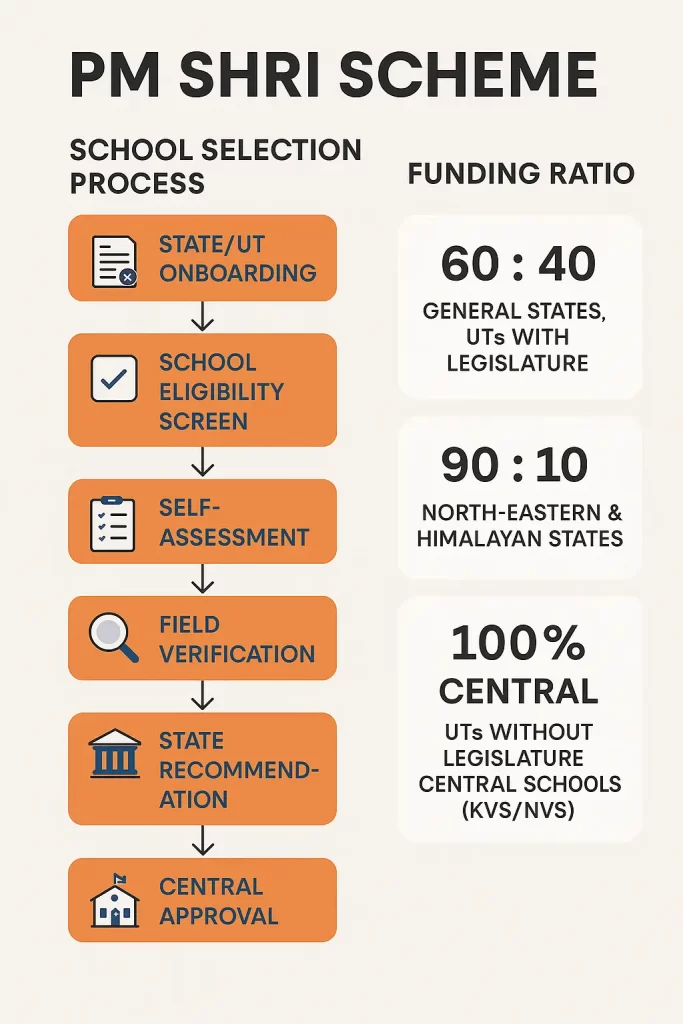
Benefits of the PM SHRI Scheme
- Raises public school standards to match top private institutions.
- Models NEP 2020 implementation through real examples.
- Improves infrastructure and digital readiness.
- Promotes inclusive education for differently-abled and marginalized students.
- Encourages mentorship networks for continuous improvement.
- Builds community participation and parental trust in government schools.
- Strengthens teacher capacity via continuous professional development.
Challenges of Pradhan Mantri Schools for Rising India
- Ensuring consistent quality across diverse geographies.
- Maintaining standards after the scheme period ends.
- Building teacher and community buy-in for pedagogical change.
- Monitoring real learning outcomes, not just infrastructure.
- Balancing funding release & utilisation efficiency across states.
PM SHRI Schools – State-Wise Data
| S.No. | State / UT | Primary | Elementary | Secondary | Sr. Secondary | Total PM SHRI Schools |
|---|---|---|---|---|---|---|
| 1 | Andaman & Nicobar Islands | 1 | 1 | 1 | 8 | 11 |
| 2 | Andhra Pradesh | 35 | 27 | 658 | 135 | 855 |
| 3 | Arunachal Pradesh | 13 | 38 | 32 | 8 | 91 |
| 4 | Assam | 88 | 33 | 138 | 123 | 382 |
| 5 | Bihar | 16 | 284 | 190 | 314 | 804 |
| 6 | Chandigarh | 0 | 0 | 0 | 2 | 2 |
| 7 | Chhattisgarh | 190 | 3 | 10 | 138 | 341 |
| 8 | Dadra & Nagar Haveli and Daman & Diu | 1 | 4 | 1 | 0 | 6 |
| 9 | Goa | 6 | 1 | 18 | 0 | 25 |
| 10 | Gujarat | 4 | 372 | 25 | 47 | 448 |
| 11 | Haryana | 0 | 0 | 5 | 236 | 241 |
| 12 | Himachal Pradesh | 56 | 0 | 5 | 119 | 180 |
| 13 | Jammu & Kashmir | 2 | 105 | 215 | 74 | 396 |
| 14 | Jharkhand | 14 | 105 | 135 | 85 | 339 |
| 15 | Karnataka | 13 | 391 | 68 | 6 | 478 |
| 16 | Ladakh | 1 | 13 | 18 | 4 | 36 |
| 17 | Lakshadweep | 3 | 4 | 0 | 4 | 11 |
| 18 | Madhya Pradesh | 15 | 112 | 236 | 330 | 693 |
| 19 | Maharashtra | 207 | 468 | 110 | 42 | 827 |
| 20 | Manipur | 21 | 19 | 46 | 19 | 105 |
| 21 | Meghalaya | 33 | 1 | 15 | 6 | 55 |
| 22 | Mizoram | 28 | 1 | 0 | 1 | 30 |
| 23 | Nagaland | 2 | 23 | 13 | 5 | 43 |
| 24 | Odisha | 0 | 24 | 368 | 58 | 450 |
| 25 | Puducherry | 0 | 0 | 3 | 9 | 12 |
| 26 | Punjab | 0 | 0 | 59 | 174 | 233 |
| 27 | Rajasthan | 16 | 123 | 18 | 482 | 639 |
| 28 | Sikkim | 3 | 10 | 8 | 22 | 43 |
| 29 | Telangana | 82 | 30 | 472 | 210 | 794 |
| 30 | Tripura | 4 | 20 | 28 | 32 | 84 |
| 31 | Uttar Pradesh | 440 | 1128 | 1 | 141 | 1710 |
| 32 | Uttarakhand | 35 | 0 | 11 | 180 | 226 |
| 33 | Kendriya Vidyalayas (KVS) | 0 | 0 | 14 | 855 | 869 |
| 34 | Navodaya Vidyalayas (NVS) | 0 | 0 | 0 | 620 | 620 |
| Total | 1329 | 3340 | 2921 | 4489 | 12079 | |
PM SHRI KV School List
Source: kvsangathan.nic.in
The Road Ahead
The PM SHRI scheme represents a turning point in India’s education system. By modernizing thousands of schools and aligning them with NEP 2020, it lays the groundwork for a generation of confident, skilled, and responsible citizens.
If implemented well, these model schools will become the benchmark for quality education — inclusive, innovative, and future-ready — helping India realise the vision of a “Viksit Bharat @ 2047.”
PM SHRI Scheme – Frequently Asked Questions (FAQs)
1. When was the PM SHRI scheme launched?
The Pradhan Mantri Schools for Rising India (PM SHRI) scheme was officially approved by the Union Cabinet on 7 September 2022. Some launch events were held around Teachers’ Day (5 September 2022) to mark the occasion.
2. What is the full form of PM SHRI?
PM SHRI stands for Pradhan Mantri Schools for Rising India, a government initiative to develop model schools aligned with the National Education Policy (NEP 2020).
3. What is the objective of the PM SHRI scheme?
The objective is to upgrade existing government schools into model institutions that provide high-quality, inclusive, and joyful learning experiences while implementing NEP 2020 in full spirit.
4. How many schools are covered under PM SHRI?
The scheme aims to develop over 14,500 schools across India as PM SHRI model schools during 2022-23 to 2026-27.
5. What is the total budget for the PM SHRI scheme?
The total project cost is approximately ₹ 27,360 crore, including a central share of about ₹ 18,128 crore over a five-year period.
6. What is the funding pattern under the PM SHRI scheme?
The funding follows a cost-sharing model: 60:40 for general States/UTs with legislature, 90:10 for North-Eastern and Himalayan States, and 100% central funding for UTs without legislature and KVS/NVS schools.
7. Does the PM SHRI scheme create new schools?
No. The scheme upgrades existing schools managed by Central, State, UT Governments, or local bodies, rather than establishing new ones.
8. Which types of schools are eligible for PM SHRI?
Government and local body-managed elementary, secondary, and senior secondary schools are eligible if they meet the minimum infrastructure, governance, and performance criteria defined by the Ministry of Education.
9. How are PM SHRI schools selected?
Schools are selected through a Challenge Mode Process involving seven stages: State onboarding, eligibility screening, self-assessment (SQAF), field verification, state recommendation, central approval, and notification.
10. Is there any limit on the number of PM SHRI schools per district or block?
Yes. As per guidelines, only two schools (one elementary and one secondary/senior secondary) can be selected per block or urban local body (ULB).
11. What is the minimum qualifying benchmark for selection?
Minimum score requirements during evaluation are around 70% for urban schools and 60% for rural schools as per SQAF criteria.
12. What improvements will a school see after becoming a PM SHRI school?
Schools will get upgraded infrastructure, digital classrooms, STEM labs, green campus initiatives, teacher training, inclusive education facilities, and competency-based learning modules.
13. How long will the PM SHRI scheme run?
The scheme covers the period 2022-23 to 2026-27. After that, States and UTs will maintain the standards independently.
14. What is the role of NEP 2020 in PM SHRI schools?
PM SHRI schools serve as real-world models for implementing the National Education Policy 2020, promoting experiential learning, multilingual education, skill development, and holistic growth.
15. Will PM SHRI schools mentor other institutions?
Yes. Each PM SHRI school will act as a hub for its cluster and mentor nearby schools to share best practices and pedagogical innovation.
16. What are the main benefits of PM SHRI schools?
Better learning outcomes, stronger teacher capacity, enhanced digital infrastructure, environment-friendly campuses, and inclusive education for all learners.
17. How can a school apply for PM SHRI status?
Schools must apply through the official portal (pmshri.education.gov.in) during the selection window opened by their State/UT government after MoU signing.
18. How is progress monitored under PM SHRI?
The Ministry of Education tracks progress through the UDISE+ data system, field visits, and the School Quality Assessment Framework (SQAF) with yearly review reports.
19. Are private schools eligible under PM SHRI?
No. The scheme is limited to government and local body schools to strengthen the public education system.
20. Which states have joined the PM SHRI scheme?
Most states and UTs have signed MoUs with the Ministry of Education. As of 2025, Kerala also joined after initial policy review, along with Tamil Nadu, Punjab, Haryana, Gujarat, Maharashtra, and others.
21. What is the impact expected from PM SHRI schools?
Enhanced student achievement, digital literacy, inclusivity, environmental awareness, and 21st-century competencies to prepare learners for a knowledge-driven future.
22. Where can I find the list of PM SHRI schools?
The official state-wise lists and implementation status are available on the Ministry of Education portal: https://pmshri.education.gov.in.
23. Who manages the PM SHRI scheme implementation?
The scheme is implemented jointly by the Ministry of Education (Government of India), State/UT education departments, and autonomous bodies like KVS and NVS.
24. What is the vision behind PM SHRI?
The vision is to create schools that embody NEP 2020 principles—holistic development, critical thinking, innovation, and equal access for every child in India.
More Schemes
- MSME Support – Top Government Schemes Offering Financial Support To Small Businesses
- Mahila Samman Savings Scheme and How to Open an Account
- Top 8 Central Government Schemes For Housewives
- Prime Minister’s Employment Generation Programme (PMEGP Scheme) – Complete Guide With Data And Success Stories
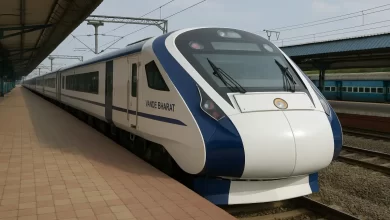 Bangalore Kochi Vande Bharat Express (via Palakkad) – Route, Train Numbers, Timings & Launch Update
Bangalore Kochi Vande Bharat Express (via Palakkad) – Route, Train Numbers, Timings & Launch Update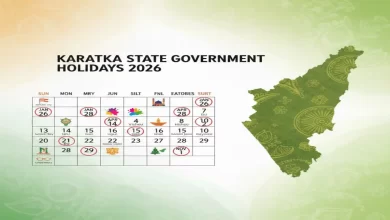 Karnataka Holidays 2026 – Official Government Holiday List
Karnataka Holidays 2026 – Official Government Holiday List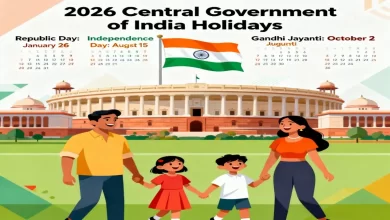 Central Government Holidays 2026 – List Of Gazetted Holidays
Central Government Holidays 2026 – List Of Gazetted Holidays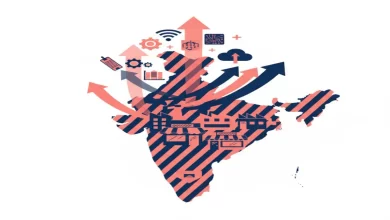 MSME Support – Top Government Schemes Offering Financial Support To Small Businesses
MSME Support – Top Government Schemes Offering Financial Support To Small Businesses